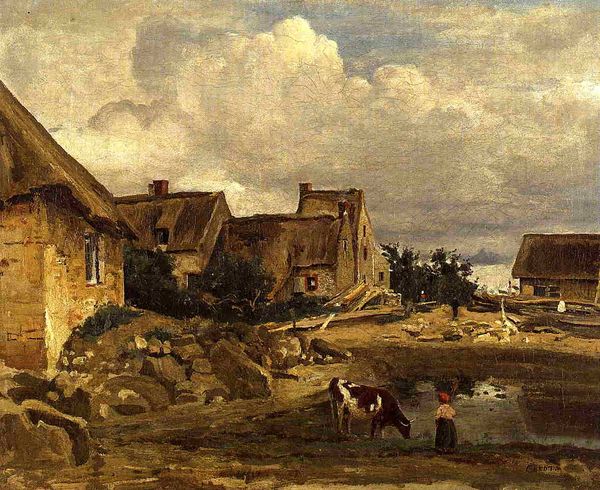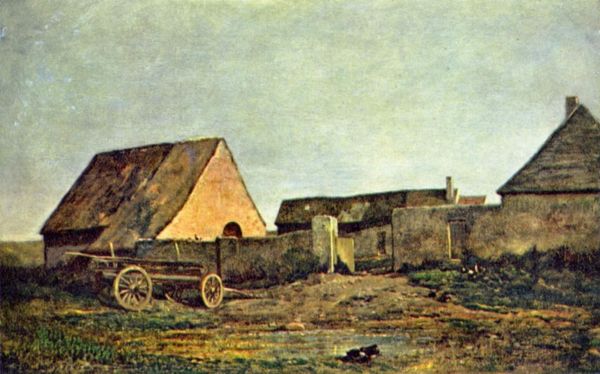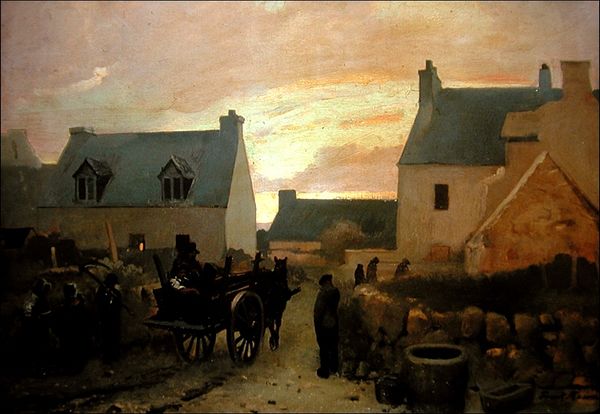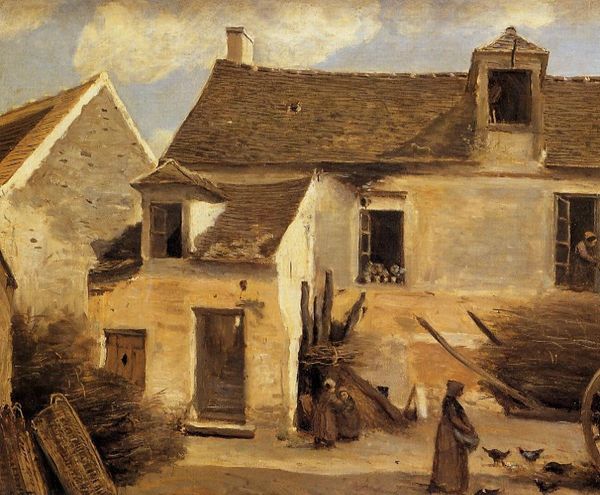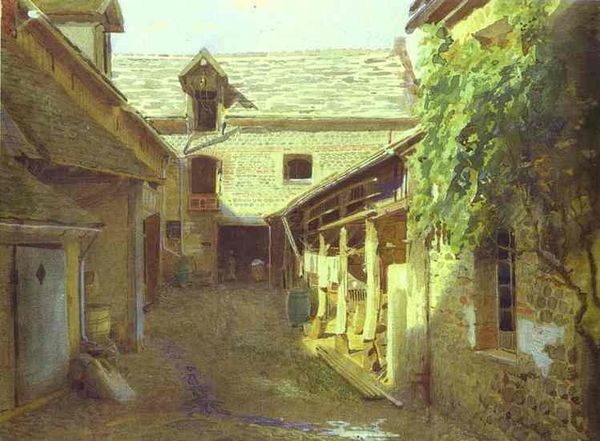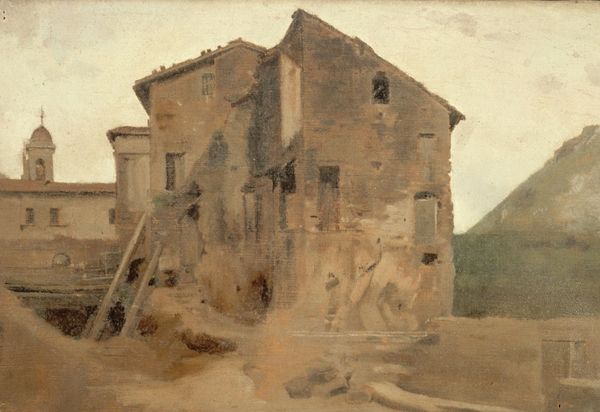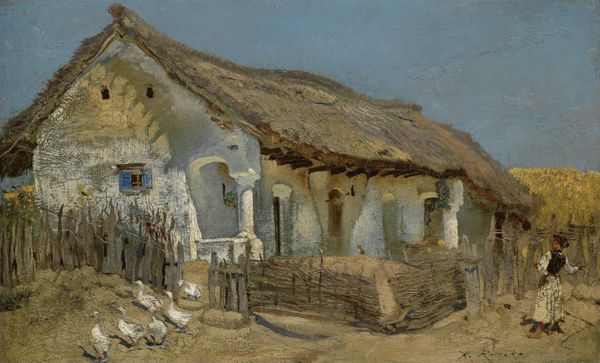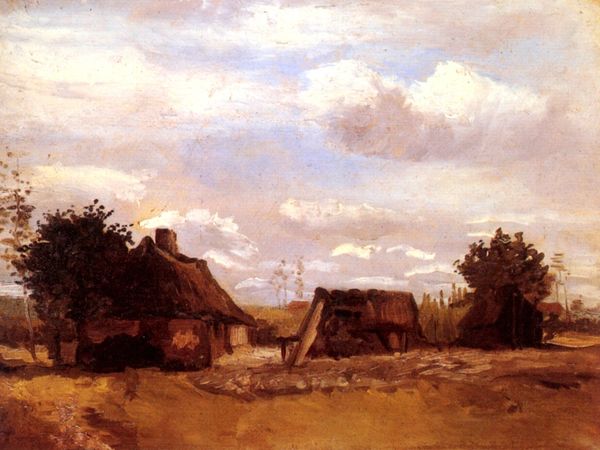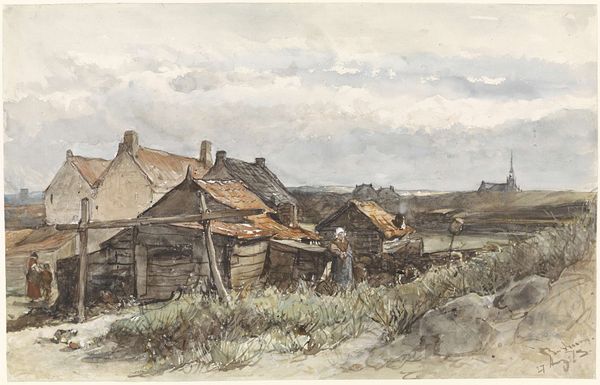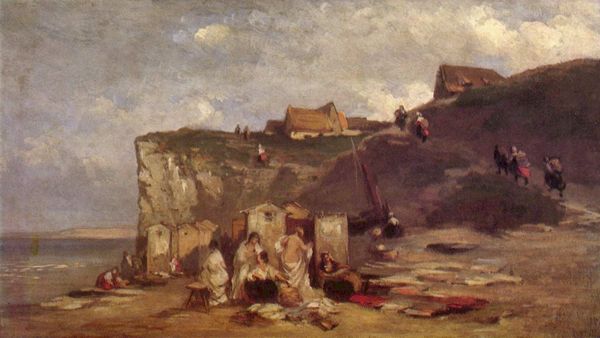
plein-air, oil-paint
#
rural-area
#
impressionism
#
plein-air
#
oil-paint
#
landscape
#
impressionist landscape
#
oil painting
#
genre-painting
Copyright: Public domain
Editor: Here we have Claude Monet’s “Farmyard at Chailly,” created around 1865 with oil paint. It’s a striking image, almost like a stage set. I’m initially drawn to the way the buildings and ground plane are lit, casting interesting shadows. What stands out to you about it? Curator: It's fascinating how Monet, at this relatively early stage, grapples with capturing not just the *what* but also the *how* of seeing. Think about what “plein air” painting meant in 1865 – an assertion of direct experience over academic studio conventions. What might this depiction of rural life say about emerging socio-political ideas about agrarian society and industrialization during that period? Editor: So you're saying this simple farmyard scene might be a statement about broader societal shifts? It seems pretty straightforward. Curator: Well, consider who was buying art like this. The burgeoning bourgeoisie. These weren’t landowners. This image presents an idealized vision of rural life that was becoming increasingly distant for many city dwellers. It speaks to a kind of nostalgic longing, even a commentary, on disappearing ways of life amid rapid industrialization. Monet isn't just painting a farm; he's curating a view of the countryside for a specific audience. How do you see the figure interacting with the space? Editor: That figure almost disappears into the scene. He seems to blend into the chicken-filled yard. It adds to that feeling of the every day. Curator: Precisely! This unassuming scene, at closer inspection, embodies complex dynamics. The museum space, displaying such paintings, is itself a key element, enshrining and sometimes distorting these views over time. Editor: I never thought a farm scene could be so intertwined with industrialization and social classes. This makes me rethink how to view artworks within a broader social context. Thanks! Curator: It highlights the importance of viewing artworks through a historical lens. Each brushstroke is also a record of its time, its relationship to viewers, patrons, and the evolving socio-political sphere.
Comments
No comments
Be the first to comment and join the conversation on the ultimate creative platform.
